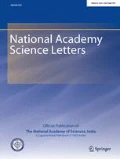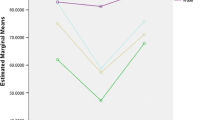Abstract
Acorus calamus (Family Araceae) is an important medicinal plant of Himalayan region largely used in the preparation of cosmetics and traditional medicines. Total phenolic content and antioxidant activity varied among the populations and solvent system. Solvents with medium polarity such as acetone and methanol were found best for extraction of total phenolic content and antioxidant activity. Total phenolic content ranged between 4.92 mg gallic acid equivalent (GAE)/g dry weight (dw) in distilled water to 8.09 mg GAE/g dw in acetone extract among different populations. Irrespective of the solvents, Jyoli population showed the maximum phenolic content (8.86 mg GAE/g dw), however, Someshwar population was found best (9.97 mg GAE/g dw) in acetone extract. Antioxidant activity measured by three in vitro assay, i.e., 2, 2′- azinobis-3-ethylbenzthiazoline-6-sulphonic acid (ABTS) radical scavenging, 1,1-Diphenyl-2-picryhydrazyl (DPPH) radical scavenging and ferric reducing antioxidant power (FRAP) assay showed a significant variation (p < 0.01) among populations. Jyoli population was found best for antioxidant activity (ABTS 13.68 mM; DPPH 6.79 mM; and FRAP 5.14 mM ascorbic acid equivalent/100 g dw). Total phenolic content showed a significant positive relationship with antioxidant activity. The results of the present study are indicative that the species can be a good source of natural antioxidant.

Similar content being viewed by others
References
Ames AN, Shigenaga MK, Hagen TW (1993) Oxidants, antioxidants and the degenerative diseases of aging. Proc Natl Acad Sci 90:7915–7922
Kikuzaki H, Nakatani N (1993) Antioxidant effect of some ginger constituents. J Food Sci 58:1407–1410
Bland JS (1995) Oxidants and antioxidants in clinical medicines: past, present and future potential. J Nutrit Environ Med 5:255–280
Tiwari AK (2001) Antioxidant: new generation therapeutic base for treatment of polygenic disorders. Curr Sci 86:1092–1101
Shui G, Leong LP (2002) Separation and determination of organic acids and phenolic compounds in fruit juices and drinks by high performance liquid chromatography. J Chromatogr A 77:89–96
Rawat S, Bhatt ID, Rawal RS (2011) Variation in total phenolic content and antioxidant potential of Hedychium spicatum Buch. Ham. ex D. Don in west Himalaya India. J Food Compos Anal 24:574–579
Mukherjee PK, Kumar V, Mal M, Houghton PJ (2007) Acorus calamus scientific validation of ayurvedic tradition from natural resources. Pharma Biol 45:651–666
Phongpaichit S, Pujenjob N, Rukachaisirikul V, Ongsakul M (2005) Antimicrobial activities of the crude methanol extract of Acorus calamus Linn. Songklanakarin J Sci Technol 26:517–523
Lander V, Schreier P (1990) Acorenone and c-asarone: indicators of the origin of Calamus oils (Acorus calamus L.). Flav Fragr J 5:75–79
Oprean R, Tamas M, Roman L (1998) Comparison of GC-MS and TLC techniques for asarone isomers determination. J Pharm Biomed Anal 18:227–234
Wang HZ, Cheng YG, Fan CS (1998) Review of studies on chemical constituents and pharmacology of genus Acorus. Acta Bot Yunnanica 5:96–100
Raina VK, Srivastava SK, Syamasunder KV (2003) Essential oil composition of Acorus calamus L. from the lower region of the Himalaya. Flav Fragr J 18:18–20
Venskutonis PR, Dagilyte A (2003) Composition of essential oil of sweet flag (Acorus calamus L.) leaves at different growing phases. J Essen Oil Res 15:313–318
Radusiene J, Judzentiene A, Peciulyte D, Janulis V (2007) Essential oil composition and antimicrobial assay of Acorus calamus leaves from different wild populations. Plant Genet Resour Charact Utilizat 5:37–44
Singleton VL, Rossi JA (1965) Colorimetry of total phenolics with phosphomolybdic-phosphotungstic acid reagents. Am J Enol Viticult 16:144–158
Surveswaran S, Cai Y, Corke H, Sun M (2007) Systematic evaluation of natural phenolic antioxidants from 133 Indian medicinal plants. Food Chem 102:938–953
Ahmed F, Chandra NSJN, Urooja A, Rangappa KS (2009) In vitro antioxidant and anticholinesterase activity of Acorus calamus and Nardostachys jatamansi rhizomes. J Pharm Res 2:830–833
Wojdylo A, Osziamianski J, Czemerys R (2007) Antioxidant activity and phenolic compounds in 32 medicinal herbs. Food Chem 105:940–949
Kandakova V, Rsvetkov I, Batchvarova I, Dzhambazova IBT, Slavov S (2009) Phenolic compounds-qualitative index in small fruits. Biotechnol Biotechnol Equip 23:1444–1448
Li H, Hao Z, Wang X, Huang L, Li J (2009) Antioxidant activity of extracts and fractions from Lysimachia foenum-graecum Hance. Biores Technol 100:970–974
Kumari R, Singh S, Agarwal SB (2009) Effects of supplemental ultraviolet-b radiation on growth and physiology of Acorus calamus L. (sweet flag). Acta Biol Cracoviensia 51:19–27
Rawat S, Jugran A, Giri L, Bhatt ID, Rawal RS (2010) Assessment of antioxidant properties in fruits of Myrica esculenta: a popular wild edible species in Indian Himalayan region. Evid Based Complement Altern Med. doi:10.1093/ecam/ned055
Jugran A, Rawat S, Dauthal P, Mandal S, Bhatt I D, Rawal R S (2012) Association of ISSR markers with biochemical traits of Valeriana jatamansi Jones. Ind Crop Prod. (doi:10.1016/j.indcrop.2012.09.004)
Author information
Authors and Affiliations
Corresponding author
Rights and permissions
About this article
Cite this article
Bahukhandi, A., Rawat, S., Bhatt, I.D. et al. Influence of Solvent Types and Source of Collection on Total Phenolic Content and Antioxidant Activities of Acorus calamus L.. Natl. Acad. Sci. Lett. 36, 93–99 (2013). https://doi.org/10.1007/s40009-012-0109-8
Received:
Accepted:
Published:
Issue Date:
DOI: https://doi.org/10.1007/s40009-012-0109-8




